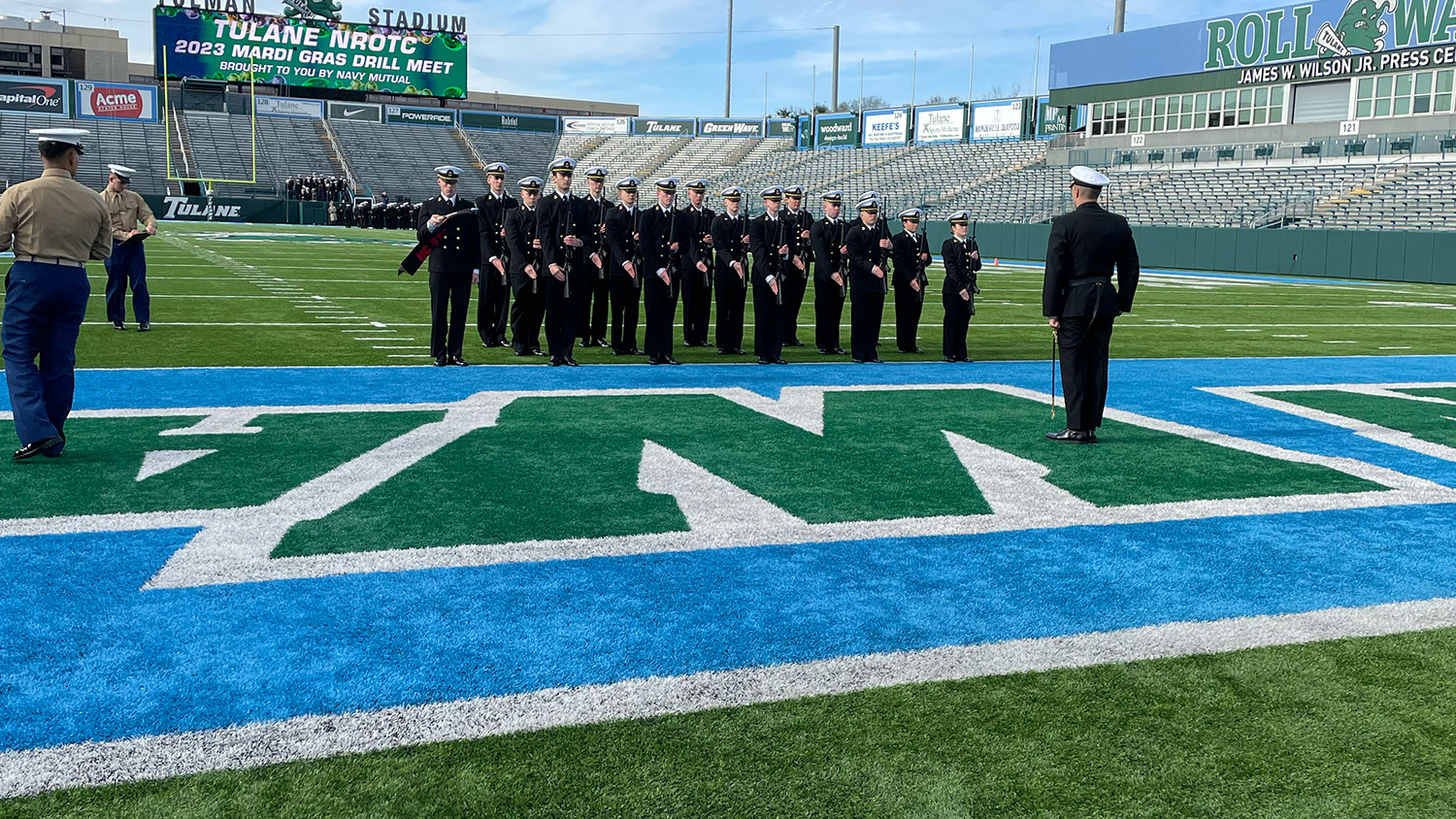What is “drill” and why does the NROTC do it?
Marine Corps close order drill involves both marching and stationary movements. It is used in ceremonies and recruit training to instill discipline and uniformity in new recruits.
Close-order drill can be performed either with weapons or unarmed. The purpose of the program at NC State’s Naval ROTC Battalion is the same. The junior members of the battalion are taught these movements in order to instill discipline and instant obedience to commands. Drill is also an incredible tool for teaching leadership. It is a tangible and standardized set of skills that gives leaders the opportunity to teach, organize, and execute a plan. It is my job as the Drill OIC (Officer in Charge) this semester to organize practices to effectively teach leadership and instill discipline with Marine Corps close order drill.
Leadership as Drill OIC
Leadership is often referred to as both an art and a science. There is a technique for speaking clearly, making good plans and placing people in the right positions; yet it is also an art to understand the people you work with, lean into your own style of leadership, and convince a group of individuals to follow you. Before taking on Drill OIC, I had what I believed to be a basic understanding of my leadership style and what worked for me. After taking on this role, however, I learned that this was far from the truth. Every new problem that has come up during the semester has taught me new ways to lead and sometimes, more importantly, be led.
One of the most important aspects of leadership in which I’ve grown significantly is thorough planning. One of my goals as Drill OIC this semester was to revise the drill curriculum and organize practices more effectively throughout the semester. In theory this does not sound all that difficult, but in practice it proved much more complicated. Figuring out logistics, time constraints and unforeseen complications in the plan was not intuitive. Creating the curriculum was not the hard part, despite it being time-consuming. During the execution phase, unaccounted-for variables highlighted my lack of experience.
With this practice as a leader, I understand better the importance of a backup plan and the ability to adapt as things change.
Another important aspect of leadership I have learned through this billet has been the importance of communication early and often. While the person in charge may have an idea of what is going on, the plan is only as effective as you can communicate it to others. If you leave things out or communicate too late, the plan of action can quickly fall through the cracks.
Most importantly, I have found the importance of delegation as a leader. As Drill OIC, there are many groups that depend on me to have a plan or at least be knowledgeable in an area to succeed. With this being said, I am only one person and unable to be everywhere all at once. I definitely spread myself too thin, in some ways, and only too late realized that it was time to delegate responsibilities down the chain of command. I have realized the importance of delegating tasks early and assigning clear responsibilities to each person.
This position has given me so many opportunities for growth, as an individual and as a leader. By reflecting on the challenges and lessons learned, I hope to apply these aspects of leadership to my next billet in the coming semesters. My time as a student of leadership is still in its infancy, but with that recognition, I hope to constantly be ready to learn when given the chance to do so.
- Categories:



